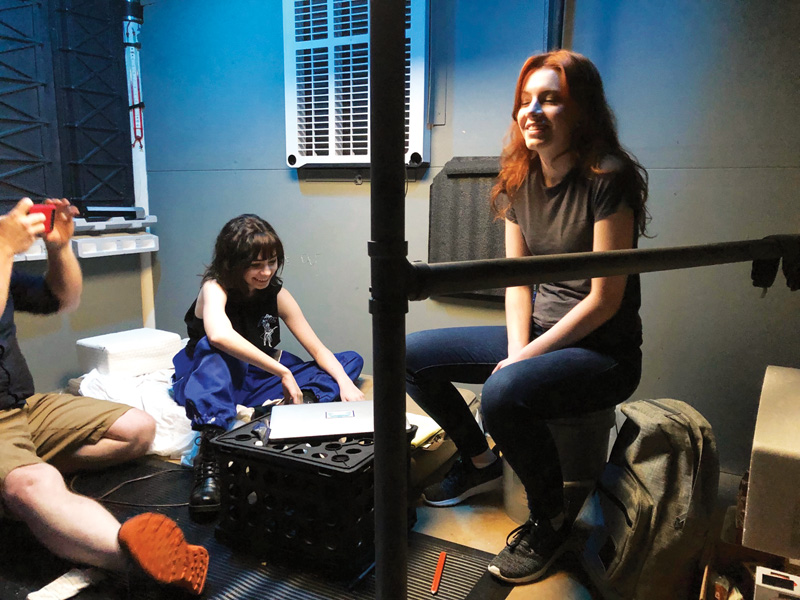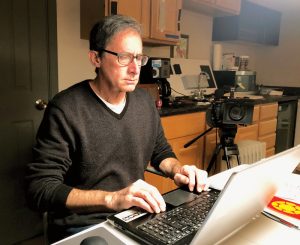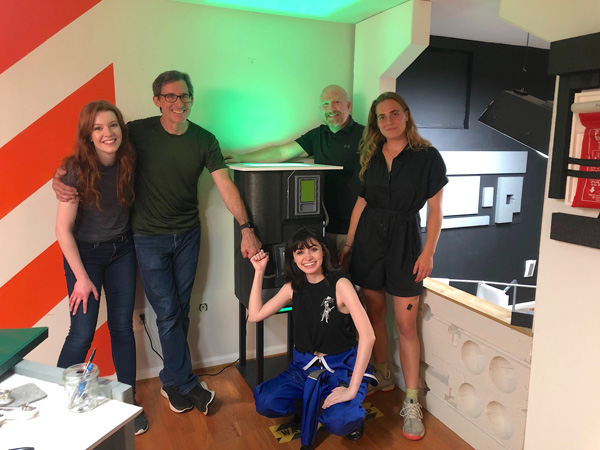Filmmaker travels far from Clayton in new sci-fi flick


CLAYTON, CA (Dec. 15, 2023) — Former Clayton resident Chris Maes is getting buzz for his first full-length feature film, “Hemisphere.”
The science fiction movie is playing the festival circuit and is also available on Amazon Prime and Google Play.
The writer/director graduated from Clayton Valley High School in 1979 and attended UCLA, earning a bachelor’s degree in film, television and digital media. From 1985-’90, he was a founding member of “The Dive at 105” – an apartment for “filmies” that included former Clayton resident Reed Steiner.
Maes remained in Los Angeles for 20 years before relocating to the East Coast. He’s been based out of Virginia the past couple decades, working for Discovery.
The resourceful Maes shot “Hemisphere” in his own basement on a $75,000 budget.
“The sets began in one area of the basement, but soon expanded to include a portion of the laundry room. This meant my wife had to weave her way past a space shuttle set as she did laundry and other home duties,” he says with a laugh.
Here’s more from Maes:
Q: How did this project come about?
A: I was still working in TV when the pandemic hit. An old friend contacted me to assist with a feature film budget and possibly a producer role. I thought about how fun it would be to get back into features. During lockdown, I spent a lot of time in my basement. My office is down there and I realized that it could double as a set for a film. I knew all I wanted to focus on was one to two characters and a ship. After 18 months of writing and building sets, we were ready to shoot.
Q: What were the biggest challenges during production?
A: The set building was very difficult. I did not find an art director until 10 days before the shoot started. She (Gabriella Saubert) really nailed things down to get ready in a short time. The crew size was also challenging with only six of us. Everyone had to be really flexible. But since we shot the bulk of the film in the basement, it made it easier to block off the shots we wanted.
Q: What’s the origin of the title “Hemisphere”?
A: I put it in just as an early placeholder. As time went by, I thought about how the film was set on the dark side of Mercury – half a planet – as well as the opposite character types. One of them is structured and by the book, while the other is unorganized, disrespectful and brash.

Q: Where did you find your two featured actresses?
A: Both are theater-trained. Originally the script was written for the Sandra character to be male. A company called Actors Access connected me with both of my actresses. When I met Paige Rion, I decided to flip the character to a female. It definitely provided better power dynamics between the two leads.
Q: Have you always been a sci-fi fan?
A: It is more of a recent development. I started with screenwriting comedies way back in high school with my friend Reed Steiner. A few years back, a writing agent told me that the great thing about sci-fi is that you can really explore concepts and pose philosophical questions the way you cannot in comedies and dramas. I feel that it will be a big part of my projects going forward.
Q: Why did you decide to set the movie only a few decades from now rather than far off in the future?
A: Of course, there is the budgetary reason. But I also wanted to have present day props on the set. Things from today would still be around. I’m convinced that when we as humans begin to better explore space, the space mining industry will be a big part of it. Also, the mid-21st century is a graspable time period as a large portion of the people who see my movie can see themselves still living during the time period of “Hemisphere.”
Q: Why did you choose Mercury?
A: Mercury has a large quantity of nickel deposits. Our ship has a giant ore processing system. That’s why the quarters and rooms are so small; it is mainly used to process the nickel.
Q: Did you use the alarm sound from “Alien” on purpose?
A: I did use that intentionally. I wanted to make sure it was used sparingly, but enough so that sci-fi fans would appreciate it.
Q: What other films have you developed?
A: I’ve mainly worked with documentary-type media like wildlife or Egyptology for NatGeo. I did work on “Darwin’s Lost Voyage,” which is a documentary-length feature. When the pandemic reconnected me with my producer friend Joe Hall, it helped reignite my desire to work on features. I had not thought about doing so since my screenwriting days prior to starting my family. As a filmmaker (as opposed to solely screenwriting), I get to test myself on various aspects: Can I edit? Can I design sound? Can I work with actors?
Q: What’s your next project?
A: I just finished a script for a film about a female streamer who battles demonic forces in a smalltown. She and her appliance repairman must survive the night.
Q: Do you ever return to Clayton?
A: Even though I was born in Sunnyvale, I count Clayton as my hometown. I get back maybe once a year. It has a calming presence for me. It stayed the same, but has changed with the times, too. The golden grasses bring me home.
